ABOUT THE AUTHORS
Meline Kevorkian , Ed.D., is the author of Preventing Bullying: Helping Kids Form Positive Relationships and Six Secrets for Parents to Help Their Kids Achieve in School and she is coauthor of The Comfort Zone : Providing a safe and bully free environment for School-Age Child Care . Currently, she is executive director of Academic Review at Nova Southeastern University, a Board Member of the International Bullying Prevention Association, and a columnist at The Miami Herald (Broward).
Meline presents regularly on best practices in bullying prevention, cyberbullying, as well as numerous topics facing educators, parents, and students in todays schools. Her experience includes teaching and administrative positions in both public and private schools from pre-school through the University level. Her research focuses on best practices in bullying prevention, school safety, and academic achievement. She has been featured on the Today Show, CNN, NBC, WSVN, Mom Talk Radio, WLRN Public Television, BlueSuitMom.com, and the National PTA.
Robin DAntona , Ed.D., is a Certified National Olweus Bullying Prevention Trainer, president and executive director of the International Bullying Prevention Association, and coauthor of The Comfort Zone: Providing a safe and bully free environment for School-Age Child Care . Robin is an educational consultant for the Cape Associates and works with school districts, after school programs, and other groups training parents, teachers, coaches, and practitioners about bullying prevention.
She is the former associate director of the Project on Teasing and Bullying at the Center for Research on Women of the Wellesley Centers for Women. She was a program consultant to the Commonwealth of Massachusetts Bullying Prevention Project expansion schools. She has dedicated her career to training and research to raise awareness and further the information base of the negative effects of bullying.
Published in the United States of America
by Rowman & Littlefield Education
A Division of Rowman & Littlefield Publishers, Inc.
A wholly owned subsidiary of The Rowman & Littlefield Publishing Group, Inc.
4501 Forbes Boulevard, Suite 200, Lanham, Maryland 20706
www.rowmaneducation.com
Estover Road
Plymouth PL6 7PY
United Kingdom
Copyright 2008 by Meline Kevorkian and Robin DAntona
All rights reserved . No part of this publication may be reproduced, stored
in a retrieval system, or transmitted in any form or by any means, electronic,
mechanical, photocopying, recording, or otherwise, without the prior permission
of the publisher.
British Library Cataloguing in Publication Information Available
Library of Congress Cataloging-in-Publication Data
Kevorkian, Meline M., 1968
101 facts about bullying: what everyone should know / Meline Kevorkian and Robin DAntona.
p. cm.
ISBN-13: 978-1-57886-849-0 (cloth: alk. paper)
ISBN-10: 1-57886-849-1 (cloth: alk. paper)
eISBN-13: 978-1-57886-896-4
eISBN-10: 1-57886-896-3
1. Bullying. I. DAntona, Robin, 1946 II. Title. III. Title: One hundred one facts about bullying.
BF637.B85K48 2008
302.3dc22
2008014129
 The paper used in this publication meets the minimum requirements of
The paper used in this publication meets the minimum requirements of
American National Standard for Information SciencesPermanence of Paper
for Printed Library Materials, ANSI/NISO Z39.48-1992.
Manufactured in the United States of America.
INTRODUCTION
T oday educators, parents, grandparents, social workers, law enforcement officers, psychologists, and all those involved in the lives of children and young adults are faced with issues of bullying. Along with the life pressures that our students face today, bullying ranks high on the list of tremendous challenges facing kids. This challenge has a great impact on their academic achievement, social interactions, and overall well-being.
Given the stakes, bullying prevention is a key responsibility for all adults. Educating and protecting kids from the abuse associated with bullying must be a priority. Learning environments should be designed with a focus on bullying prevention. The key to bullying prevention is creating a caring and positive school culture.
The first and most crucial step to bullying prevention and promoting peace is to separate the myths and facts and to gain awareness of what research says about bullying and its prevention. While there is an abundance of information on bullying, not all of it is based in quality research. In order to set the example for kids and to make any bullying-prevention plan successful, there must be a fundamental belief that bullying is a serious problem.
In addition, the stakeholders must feel empowered to act when bullying behavior is encountered. This book is designed to break down what the research says about bullying, including cyberbullying, and its effects. It is our hope that this book will give you the practical information to reduce or even eliminate bullying.
MYTHS AND FACTS
F act #1 Bullying is a reality! (Dake, Price, & Telljohann, 2003)
Gaining the Peaceful Edge... Acknowledging the fact that bullying is a serious issue confronting our children.
Research has suggested that many students are and will continue to be bullied. We live in a social world, and this is especially true in schools. One hundred percent of children are touched by bullying as a victim, perpetrator, or bystander. Bullying is a reality that must be recognized and addressed. Bullying and teasing are not simply a part of growing up.
These behaviors should not be tolerated or dismissed, especially when their consequences reach far beyond the classroom. The research is consistent that bullying and teasing create a fear and concern for safety that retards and stops the learning process and may have long-lasting negative effects.
In a recent study, 77 percent of students said they have been bullied, and 14 percent of those who have been bullied said they have experienced severe reactions to the abuse. According to Hostile Hallways: Bullying, Teasing, and Sexual Harassment in School (2001), in a national sample, 83 percent of boys and 79 percent of girls said they have been bullied.
Approximately 76 percent of this was nonphysical and approximately 60 percent was under the teachers nose. More than half the students want to know how to stop it. Fifty percent of kids have received comments about their sexuality. Third graders through high schoolers say faggot, youre so gay, and homo, with little or no regard for the pain they may cause. Such verbal abuse has become far too tolerable and often dismissed as kids jargon.
F act #2 Many children are bullied in school.
Gaining the Peaceful Edge... Think about the fact that 55 percent of eight- to eleven-year-olds tell us that bullying is a problem, and then consider the children in your life.
According to a study conducted by Nickelodeon (2001), 74 percent of seven- to eleven-year-olds and 86 percent of twelve- to fifteen-year-olds indicated that children were bullied or teased in their schools. Additionally, 55 percent of eight- to eleven-year-olds and 68 percent of twelve- to fifteen-year-olds said that bullying was a big problem for people their age.
We seem to have full agreement that talking about drugs, alcohol, and peer pressure is a must for our youth. Our children are very vulnerable and can be overwhelmed and intimidated by general peer and school pressures. When bullying and teasing enter the equation, schools become a place of survival rather than a place of learning. Too often, our children are feeling like nobody can help when it comes to bullying. They often see it happening and dont know what to do to resolve the problem.


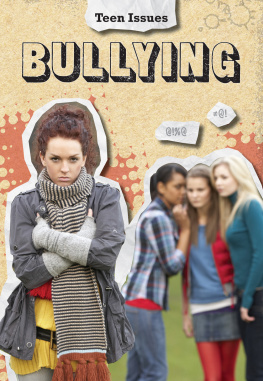
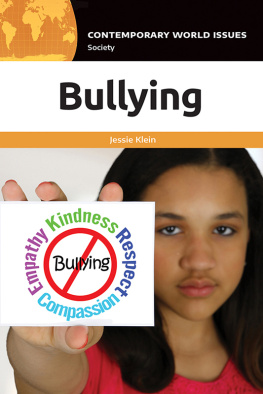

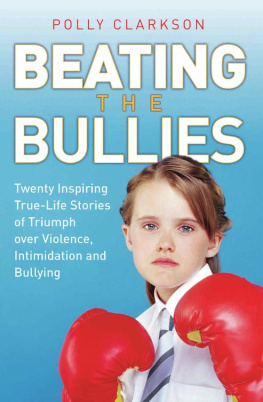
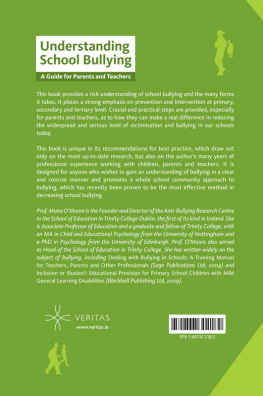
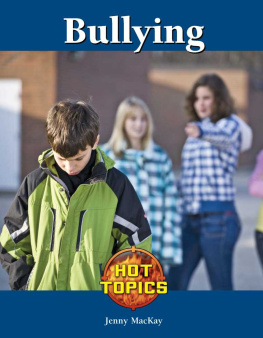
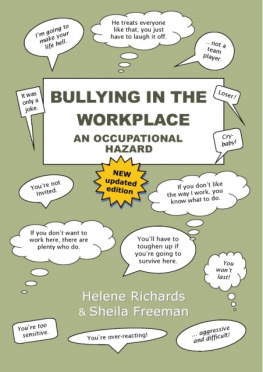
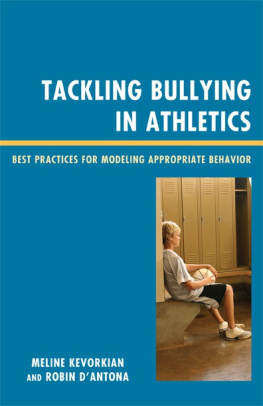


 The paper used in this publication meets the minimum requirements of
The paper used in this publication meets the minimum requirements of